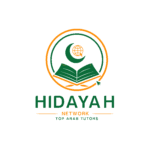The importance of learning Arabic stems from its remarkable proficiency. It is the language of the Holy Quran and the Prophet’s Sunnah (Prophetic Tradition). Therefore, it is an integral part of the Islamic religion.
Reading the Quran is a pillar of prayer, and prayer is a pillar of Islam. Not only that, Arabic is the largest Semitic language and the most widely spoken language in the world.
As it is the mother tongue of more than 422 million people.So we will help you through this guide on How to Learn Arabic to Understand the Quran?
How to Learn Arabic to Understand the Quran?
Speaking about Arabic learning, Arabic is one of the most important languages in the world. It is the language of the Holy Quran and the Prophet’s Hadiths (Prophetic Traditions). Therefore, it holds great importance in various religious, scientific, and cultural fields.
Learning Arabic is an essential step for those who wish to study the sciences of the Quran and the Sunnah, or for those who wish to communicate with the Arab world for any reason.
This is especially true given the large number of Arab expatriates around the world who wish to preserve their cultural heritage and teach it to their children.
With the proliferation of social media and the internet, learning Arabic has become more important than ever to better understand Arabic content and communicate with Arabic-speaking communities.
Characteristics of the Arabic Language
When it comes to learning Arabic, the Arabic language has features that distinguish it from other languages. One Orientalist even said of the Arabic language:
“One of the most astonishing things is that such a powerful language should have emerged and attained a degree of perfection among a nomadic nation.
This language surpassed its sister languages in its vast vocabulary, precise meanings, and well-structured structures.” Among the characteristics of the Arabic language are the following:
Expansion and Flexibility:
It is one of the most flexible and expansive languages, evident in its many words, diverse vocabulary, consistent structure, diverse styles, smooth logic, and clear articulation.
The stability of its origins:
the absence of alteration or distortion. It is the language in which our ancestors wrote and our descendants understood. It is the language of the pre-Islamic era and the contemporary language.
It has flexible branches and stable vocabulary. It is the language that has preserved its derivational links, which has preserved its character throughout the ages.
Preserving its origin and identity is a characteristic of the Arabs, and their language has also acquired this characteristic. This is what enables its derivational characteristics to distinguish the authentic from the foreign and the intrusive.
Brevity and conciseness:
These are among the most obvious characteristics of the Arabic language, and one of the hallmarks of the Arabs. Brevity in the language takes many forms, including brevity in letters.
In Arabic, vowels are written above or below the letter, unlike other languages, where vowels take on the same size as the letter.
Repeated letters in Arabic are abbreviated with a vowel that doesn’t take up space, namely the shaddah. There are many other forms of brevity in letters.
Other forms of brevity include brevity in words and brevity in structures. Examples include adding a pronoun to a word and brevity in written language.
An example of this is when translating Arabic into other languages, where the Arabic translation is less than the original.
Authenticity:
The Arabic language is one of the oldest languages on Earth, and the most authentic.
The Importance of Learning the Arabic Language
The importance of learning the Arabic language lies in the following:
Organizations of the Islamic world, such as the Organization of the Islamic Conference, should also adopt the teaching of the Arabic language to Muslim children.
Steps to Learning Arabic for Native Speakers
Learning Arabic for native Speakers involves memorizing and understanding many synonyms, in order to accurately understand Arabic texts.
As well as mastering other language sciences, such as grammar and syntax.
Therefore, learning Arabic always begins with learning the letters and their pronunciation.
As a basic step for later ability to create and compose structures and sentences. Learning Arabic includes three main points:
1-Learning to Read Arabic
Speaking about How to Learn Arabic to Understand the Quran? There are many effective methods and approaches designed to teach reading Arabic for children and adults alike.
One of the most famous of these approaches is “Al-Qa’idah Al-Nooraniyah,” a comprehensive approach for teaching Arabic reading to native and non-native speakers of all ages.
Al-Qa’idah Al-Nooraniyah is based on teaching the pronunciation of letters, followed by how to connect them, then learning vowel sounds with letters.
Followed by lengthening and shaddah. It is worth noting that all the vocabulary and structures mentioned in Al-Qa’idah Al-Nooraniyah are taken from the Holy Quran.
This method is widely used in most schools and educational platforms dedicated to learning the Arabic language, and it is one of the easiest and best ways to learn to read Arabic.
2-Learn Arabic Grammar
Learning Arabic grammar enhances the language skills of learners, whether young or old.
Grammar helps them accurately understand texts by analyzing their words, i.e., separating verbs from nouns, identifying the subject, and identifying the event, time, and place.
These concepts are essential keys to understanding any text. Learning Arabic grammar also helps improve speaking and writing skills, as well as creative expression.
When learners are able to construct correct sentences, they can easily express themselves and speak fluently in classical Arabic.
This is closely linked to learning and understanding the basic rules of the Arabic language.
In general, learning Arabic grammar begins by distinguishing between letters and nouns, then distinguishing between nouns and verbs. After that, they gradually move on to identifying nominal and verbal sentences.
3- Learn to Write Arabic
One of the fundamentals of learning to write Arabic is knowing the rules of spelling. These rules teach the correct way to write words and apply spelling when writing any new word.
Spelling rules begin with teaching the correct writing of letters on the line, followed by the long vowels (a, w, and y), followed by the vowel marks.
(fatha, damma, and kasra) and sukoon, then gradually moving on to other rules. To establish a proper foundation for the learner, it is essential to adhere to the spelling rules so that they can write and spell with ease when learning new vocabulary.
Steps for learning Arabic to Non-Native Speakers
Arabic for non native Speakers is taught in Standard Arabic, not colloquial dialects. Colloquial dialects differ significantly from one another, not to mention their inability to address all language skills.
Teaching Arabic to Non-Native Speakers includes developing several aspects in conjunction with one another, as follows:
Teaching Sounds:
The goal of this aspect is to familiarize non native Speakers with the articulation of letters. Arabic has the largest number of articulation points compared to other languages, such as English and Russian.
Therefore, it is important for teachers to begin at this level, as learners find it difficult to pronounce some sounds, given their lack of presence in their native language.
Such as the sounds of the following letters (ح, ق, ع, خ). By developing the skill of pronouncing sounds, reading and writing will become easier in later stages.
Teaching Reading and Writing:
Here, spelling rules are often relied upon to ensure correct spelling and writing, while specific reading methods are followed, such as the Nooraniyah Qaida curriculum, which helps students read gradually.
Grammar Teaching:
After teaching the student letters and sounds and practicing pronunciation of words, the student moves on to grammar teaching. The rules to be taught are determined after determining the student’s level. Effective grammar teaching activities include:
1- Substitution Training:
This is a simple and effective method for practicing grammatical structures. The student practices a sentence by repeating it several times.
Then replacing one of the words in the sentence with another word that performs the same function.
2- Conversion Training:
Here, the learner is trained to convert singular words to dual and plural, affirmative sentences to negative sentences, and declarative phrases to interrogatives.
Vocabulary Teaching:
When teaching vocabulary, attention is focused on teaching synonyms and antonyms, presenting them in different contexts so that their meanings are clearly understood.
This enables the learner to express themselves correctly later, with a large vocabulary.The most commonly used activities in vocabulary teaching are.
Explaining vocabulary and connecting it to each other, finding an unfamiliar word from a group of words, or connecting a word with its opposite.
Listening:
Listening helps students consolidate what they have learned in various aspects and helps them better understand texts.
An effective activity for this is listening to short, simple stories, then asking the student to explain or act out what they heard in the story.
What is the best Academy for learning Arabic?
Today, with the proliferation of distance learning platforms, many platforms and websites offer modern and innovative methods for learning Arabic.
Among the best platforms offering modern methods for teaching Arabic is Hidayah Academy. At Hidayah Academy, we offer Arabic language learning methods using a comprehensive, scientific approach, with an experienced teaching team.
Through our interactive courses, we aim to teach children and adults reading, writing, and other sciences in a fun and engaging way that is age-appropriate.
Conclusion
Learning Arabic is an enjoyable journey that brings with it many cultural and personal benefits. Whether you’re learning it to understand the Holy Quran, communicate with others, or achieve professional goals, the first step begins today. Get started now and share your experience with us. You can also join the Hidayah Academy to receive more educational resources and helpful tips.
You can learn Arabic quickly by first learning the alphabet, then moving on to learning basic vocabulary and spelling rules, learning basic grammar, and practicing listening to Arabic texts.
To begin studying Arabic, you must first learn the letters and how to pronounce them with vowels and consonants. Start by reading short children’s stories, as they often contain easy words. Then, try to speak Arabic daily.
You can teach Arabic to adults by first learning all the letters and completing them, then moving on to forming words and sentences. You can also use the opposite method, starting with sentences, then words, and finally letters.

About Author

